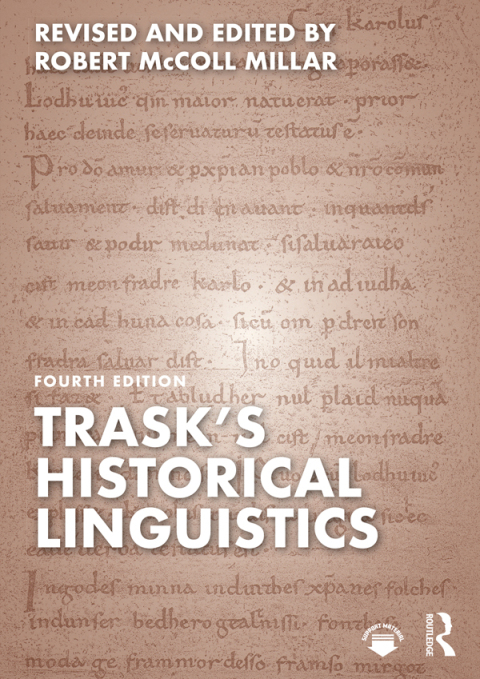Description
Efnisyfirlit
- Cover
- Half Title
- Endorsements
- Title
- Copyright
- Contents
- List of illustrations
- To the reader
- To the teacher
- Acknowledgements
- List of abbreviations
- 1 The fact of language change
- 1.1 Irregardless
- 1.2 English then and now
- 1.3 Attitudes to language change
- 1.4 The inevitability of change
- Case study: kind regards
- Further reading
- Exercises
- 2 Lexical and semantic change
- 2.1 Borrowing
- 2.2 Phonological treatment of loans
- 2.3 Morphological treatment of loans
- 2.4 Formation of new words
- 2.5 Change in word meaning
- Case study: nice
- Further reading
- Exercises
- 3 Phonological change 1: change in pronunciation
- 3.1 The phonetic basis of phonological change
- 3.2 Assimilation and dissimilation
- 3.3 Lenition and fortition
- 3.4 Addition and removal of phonetic features
- 3.5 Vowels and syllable structure
- 3.6 Whole-segment processes
- 3.7 The regularity issue: a first look
- Case study: Germanic */xw/ in the present-day dialects
- Summary
- Further reading
- Exercises
- 4 Phonological change II: change in phonological systems
- 4.1 Conditioning and rephonologization
- 4.2 Phonological space
- 4.3 Chain shifts
- Case study: large scale change in the Germanic consonant system – Grimm’s Law and Verner’s Law
- Summary
- Further reading
- Exercises
- 5 Morphological change
- 5.1 Reanalysis
- 5.2 Analogy and levelling
- 5.3 Universal principles of analogy
- 5.4 Morphologization
- 5.5 Morphologization of phonological rules
- 5.6 Change in morphological type
- Case study: the evolution of the definite article from the demonstrative paradigm in English
- Further reading
- Exercises
- 6 Syntactic change
- 6.1 Reanalysis of surface structure
- 6.2 Shift of markedness
- 6.3 Grammaticalization
- 6.4 Typological harmony
- 6.5 Syntactic change as restructuring of grammars
- Case study: the rise of ergativity
- Further reading
- Exercises
- 7 Relatedness between languages
- 7.1 The origin of dialects
- 7.2 Dialect geography
- 7.3 Genetic relationships
- 7.4 Tree model and wave model
- 7.5 The language families of the world
- Case study: a Martian’s view on the Germanic language family
- Further reading
- Exercises
- 8 The comparative method
- 8.1 Systematic correspondences
- 8.2 Comparative reconstruction
- 8.3 Pitfalls and limitations
- 8.4 The Neogrammarian Hypothesis
- 8.5 Semantic reconstruction
- 8.6 The use of typology and universals
- 8.7 Reconstructing grammar
- 8.8 The reality of proto-languages
- Case study: a reconstruction too far?
- Further reading
- Exercises
- 9 Internal reconstruction
- 9.1 A first look at the internal method
- 9.2 Alternations and internal reconstruction
- 9.3 Internal reconstruction of grammar and lexicon
- Case study: the laryngeal theory of PIE
- Further reading
- Exercises
- 10 The origin and propagation of change
- 10.1 The Saussurean paradox
- 10.2 Variation and social stratification
- 10.3 Variation as the vehicle of change
- 10.4 Lexical diffusion
- 10.5 Near-mergers
- Case study: historical sociolinguistics
- 10.6 A closing note
- Further reading
- Exercises
- 11 Social and historical pressures upon language
- 11.1 Linguistic contact
- 11.2 Linguistic areas
- 11.3 Language birth: pidgins and creoles
- 11.4 Language planning
- 11.5 Language death
- Case study: the genesis and development of American and New Zealand English
- Further reading
- Exercises
- 12 Language and prehistory
- 12.1 Introduction
- 12.2 Linguistic palaeontology
- 12.3 Links with archaeology
- 12.4 Statistical methods
- Case study: Greenberg’s mass comparison
- Further reading
- Exercises
- Appendix: the Swadesh 200-word list
- References
- Index






Reviews
There are no reviews yet.